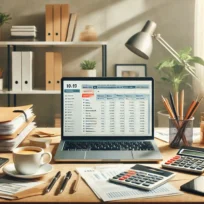Surveys have shown that most borrowers taking a payday loan are not able to pay on time and have decided to roll over or re-borrow. How would you handle a payday loan to avoid the vicious cycle?
Surveys have shown that about 12 million American adults per year use a payday loan or cash advance when they need instant money. However, paying is not as easy as taking loans. Most borrowers are unable to pay their loans on time due to high interest and fees.
The Nature of Payday Loans
Understanding how the loan works would help why most borrowers are trapped in debt. It is a short-term loan with high-interest and due to the next payday. Lenders can encash the post-dated check or have access to your bank account to collect the payment.
What makes it harder for borrowers is that if they are living paycheck-to-paycheck, they don’t have extra cash to pay their loans because they also have their regular bills and expenses to manage. It comes with annual percentage rates of 400 percent that makes it even difficult for them to pay the loan.
6 Tips to Handle and Avoid the Vicious Cycle
1. Do not Borrow Another Loan
If you think that you can’t pay your cash advance, do not attempt to borrow another loan. Many people have been trapped in the cycle by taking another debt. They will borrow again to pay the loan for the month without thinking how they are going to manage next month.
The problem is, aside from the loan, they need money to pay their rent, bills, emergencies, and other expenses. Unless they cut out their expenses, that’s the only time they can manage their finances little by little.
2. Work on your budget.
Now that you have a personal loan, your budget changes. You need to include your payment for the loan on your budget.
Start creating a personal budget. List your daily, weekly, and monthly expenses as well as other payments. Make sure to write a budget that is close to your real expenditures.
By plotting all your financial obligations, you’ll know how you can work out, change, or limit your expenses. If you think that it is impossible to pay your loan right now, seek advice.
3. Talk with your lender.
If you can’t really pay the whole amount of your loan, talk with the lender right away. Perhaps, you can arrange a payment scheme that will help you pay to avoid getting into trouble.
Arrange for a loan restructuring that includes how much you can pay, how often, and when you will pay until you finish it. Ask for a new agreement and make sure to honor it.
4. Consider an EPP.
EPP stands for extended payment plans. Any lender that is a member of the Community Financial Services Association of America (CFSA) can give you an EPP.
Your lender may extend your loan of up to four pay periods without extra interest and fees. You are also protected from collections unless you default.
Follow the process of applying an EPP. File your application not more than the last day of your due payment. Don’t forget to sign a new agreement.
5. Plan for emergency cases.
You need to have a backup plan during emergencies. You cannot just continue taking debts if you haven’t settled anything.
Try to save a bit each month. It doesn’t need to be big at once. You should learn how to save for emergencies because you don’t know what could happen.
6. Attend a credit counseling.
Consult a credit counseling agency that can help you in planning your finances and can help you get out of debt. Find a credit counselor near you.
They can advise you on a better way to settle your loan. Some lenders work with these agencies, so it is easier for you to find a solution.
It is hard to get out of debt, especially when you don’t have extra cash to pay for everything. However, it is not impossible to find a solution. You need an effective plan that can help you manage your finances and put it back in shape.




